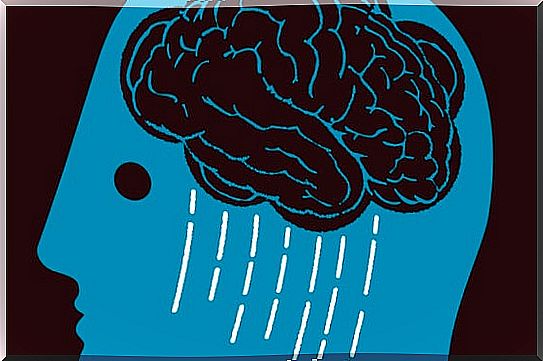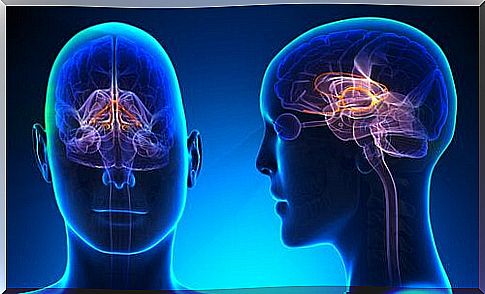What’s So Special About The Dreams Of People With Depression?

People with depression often experience different types of sleep disorders. But there is also a strange phenomenon here that has been scientifically proven. The dreams of people with depression last up to three times longer than the dreams of people without depression.
Although depression often causes discomfort and fatigue, the dreams of people with depression have a very specific purpose: to put their emotional world in order.
This is definitely a new theme. Moreover, it is a subject that many of us know little about. When we talk about depression, we usually focus on a few specific things.
Those are usually the symptoms, the causes, or the different treatments we have. But we rarely look at this subject from a different angle.
That is, we will try to get a better understanding of what happens in the brains of people with depression when they finally manage to fall asleep.
We agree with Freud’s statement that dreams are the royal road to the unconscious mind. That path can indeed be a windy road that never takes us anywhere. But it can provide absolutely spectacular insights into what is really going on in our minds.
Dreams are evidence of a problem. They are like an abstract painting by Kandinsky. They try to tell us something, shape what hurts, angers, frightens or threatens us.
The dreams of people with depression are a defense mechanism that their brains use in an attempt to deal with a confusing emotion.
The REM phase in people with depression
dr. Rosalind D. Cartwright is a celebrated psychologist at Cornell University. She has devoted much of her life to researching and understanding the dream world.
For example, in the well-known book, The Twenty-Four Hour Mind, she elaborates on the interesting relationship between our emotions and our dreams.
This is really about an amazing effort of years of research where one idea really stands out. The brain engages and helps us process negative emotions – through dreams.
The way the brain does this is both fascinating and strange. Why? Because the person does not even notice how dreams help him. Yet dreams help, and they do so through a variety of different mechanisms. Let’s take a look at those…
The REM phase and the dreams of people with depression
- For example, depressed people may feel sleepy during the day and have difficulty falling asleep at night.
- When they wake up, they often feel tired. That’s because they don’t have a good restorative night’s sleep. The opposite actually. They feel as if their head is even ‘fuller’. They know that they have dreamed a lot, but they can never clearly remember what those dreams were about.
- What actually happens is that depressed people get into the REM phase much earlier. In addition, this stage in which the dreams occur usually lasts three times longer. That means that people with depression dream three times more than people without depression.
- We should also remember that we call REM “paradoxical sleep” because it does not provide any rest. In fact, it is the period when we produce the greatest amount of adrenaline.
- Thanks to new imaging and diagnostic tests, we have also been able to identify something in the limbic system. This system is connected to our emotions. During the REM phase, it is more active than ever. This only happens in depressed people.

dr. Cartwright explains how our brains take control when we sleep. The most striking aspect right now, and even more remarkable than experiencing a restorative physical rest, is that the brain ‘stimulates’ us to work on our emotional confusion.
However, they sometimes do this in the worst possible way. Because the brain uses nightmares and bad dreams. This also happens in the dreams of people with depression.
Everything that causes confusion, fear or despair within us comes out in this surreal alien world. Our brains try to control that negative emotion. They try to ‘detoxify’ that disturbed tension.
Resting patterns in people with depression
We realize that dreaming three times, nightmares and tiredly opening the eyes to start a new day is not very beneficial for overcoming depression.
If this information can help us in any way, it is that we get to know our enemy better. Indeed, we need to recognize that our brains are telling us that we need to fix something.
Knowing this, it’s always a good idea to practice sleeping techniques. These are helpful in improving the sleep of people with depression.
Moreover, they can also help us if we go through a similar situation. This applies to mild depression, dysthymia or severe depression.
A few tips
- Before going to sleep, we should avoid intensifying our emotional burden. Worrying will undoubtedly worsen our mood.
- Exercises such as meditation or any other relaxation technique can help with this. Because they help us go to sleep with less active brains.
- If we take antidepressants, it’s also a good idea to check what side effects they might have on our sleep. Perhaps we should then consider whether we would be better off taking other medications if the effects are too severe.
- We also need to adjust our daily rhythm. It is important that we try to follow a consistent schedule and that we go to bed and get up at the same time every day.

Our REM sleep will adjust on its own as we continue with our treatment plan. This sleep will last less and allow us to rest better. At the same time, our dream world will no longer be so disturbing, mysterious or even terrible.
Our brains will stop putting our emotions first. So they will be able to resume their normal nighttime habits. At night, the brain usually classifies important information, organizes experiences and removes useless data.
Our inner world then comes into balance again. The nightmares and the shadow of the depression will fade…









